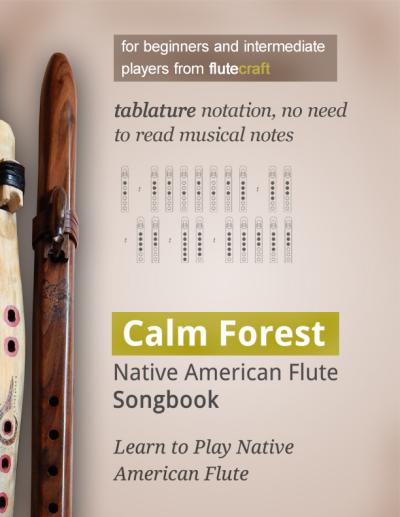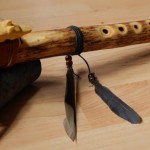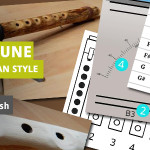Modern technology meets traditional instruments! Recently I bought a 3D printer (Ender 3 V2 [aff] to be exact). One of the first things I decided to design and print was a Native American style flute in the key of F#. I wanted to see whether it’s possible to print a working instrument. And, well, yes – it’s possible! But that’s not the only thing I’ve learned.
Read on and learn the things I’ve learned when 3D printing a Native American style flute.
How Does 3D Printing Works
The main body of the flute is printed on a FDM printer (as opposed to SLA resin printer).
I don’t want to bore you with technical details, so here’s the short version: a 3D printer melts so called “filament”, a long string of plastic. There are a few types of filament. I personally use PLA, the very basic type, which is biodegradable, doesn’t like temperatures above 50 degrees centigrade, but otherwise is very easy to work with. The printer melts the filament, then deposits it in layers and thus, a plastic item can be produced.

Here’s the flute printed with deep black filament.
The technology isn’t consumer-grade yet. I mean, an ordinary person can’t just buy a printer and print anything they want. The machines require maintenance and skills, not to mention some calibrations to start with. But if you’re a flutemaker, you probably already have the necessary skills to operate this kind of machine.
So, despite what you can read online, at the moment of writing this article, 3D printing isn’t a consumer grade thing. I mean, it’s not plug and play. You need to enjoy tinkering, maintaining gear, and figuring out why things just won’t work ;).
It works!
The first thing I’ve learned is that a 3D printed Native flute works! It produces a rather clean sound, it resonates nicely, and generally, is a very pleasant instrument. I wasn’t sure if the model was going to work, but after some prototyping and tweaking, I managed to create a working model.
Listen how it sounds:
It sounds great
The quality of the sound often depends on the sound mechanism details. This is true no matter the material you’re using to build the flute. So, once you get that right with the digital model, and the printer is well-calibrated, the flute will work like a wooden one.
The best part? Once the 3D model is finished, the printer will make the flute already in tune. No additional tuning is required.
That said, it took me many prototypes to get the flute in tune. Of course, getting perfect tuning is nearly impossible even on professionally made flutes. The notes vary depending on humidity, temperature and the strength/pressure of the air being blown into the instrument. That said, a 3D printed Native American flute is great for beginners!
It takes a lot of time
3D printing isn’t fast. A Native American style flute in the key of F# that is around 65 centimeters long takes about 24 hours to print. And I print it in 3 pieces that need to be put together. Fortunately, I managed to create a model that requires very little post-processing. It just needs to be glued.
But, the amount of time necessary for printing makes such printed flutes rather expensive. With one printer working, I think I would have to charge about 450 dollars per instrument. But as a side project, this isn’t an issue, and if you’re thinking about launching a flute business, it’s obvious you will get 10 to 20 printers.
There are “Cons”
There are some things to note, though. PLA is very water resistant. As you know, when you play the flute, moisture from your breath condenses inside the instrument, and once enough of it gathers, it can block the air channel and cause the flute to stop working. Thus, like with most wind instruments, you need to blow the moisture out from time to time. This happens for all Native style flutes, it’s normal.
I guess it’s “stronger” in case of PLA, since this is plastic. So this is the “con”, you may need to get rid of condensed moisture more often than in case of wooden flutes.
Another issue is that wooden flutes like to crack due to temperature fluctuations. This should not happen to PLA flute, but similar to wooden instruments, PLA doesn’t like temperatures. High temperatures, to be exact. Anything above 50 degrees Celcius may cause the PLA to deform. Thus, like with normal flutes, please do not leave your printed instrument in a car on a hot day :).
The Future of 3D Printed Flutes?
Will 3D printed instruments take over the world? Well, no, I do not think so. They’re slow to build, and when you think about it, they’re not necessarily cheaper than wooden or metal instruments. But with economies of scale and a large number of printers, we can drive the price down. While this won’t replace wooden or metal instruments, it creates an interesting alternative to typical materials used for instrument production.
That said, I strongly believe that 3D printed Native American flutes can be a great starter flute, an affordable educational and/or practice tool, and a great way to get this instrument to as many people as possible.
Get My Free Models
Now the best part – I made my basic models completely free! Yes, you can download them, set up in the slicer, and you’re done. You can download it for free on one of these websites:
The basic models are available as Creative Commons, which basically means that as long as you’re not selling the printed flutes, you don’t need any commercial license.
And I’ve prepared a short tutorial explaining how to get these prints to work as a real flute. Watch it here:
Don't forget to become a fan on Facebook and subscribe to new posts via RSS or via email.










 via EMAIL
via EMAIL